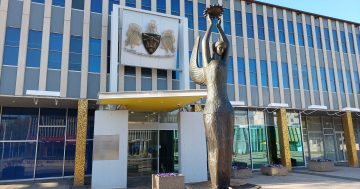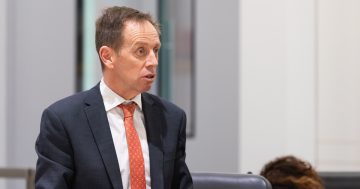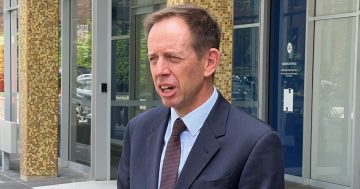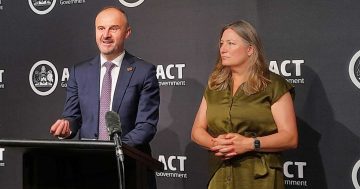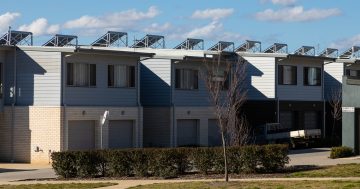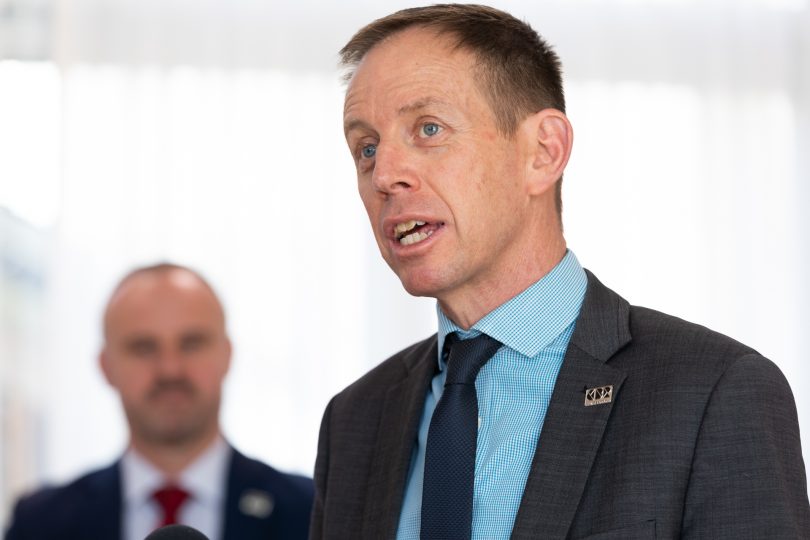
ACT Greens leader Shane Rattenbury: ”If you vote for the Greens the outcomes have flowed.” Photos: Michelle Kroll.
ACT Greens leader and government minister Shane Rattenbury has named housing as the top priority for any future Parliamentary Agreement between his party and Labor.
Mr Rattenbury, outgoing Greens MLA Caroline Le Couteur and Chief Minister Andrew Barr fronted the media yesterday (31 August) to discuss the outcomes of the current agreement of the ninth Assembly, most of which have been delivered but the handful that haven’t include several housing initiatives.
Mr Rattenbury said if the Greens were again in a position after the 17 October election to play a role in government, ”we’ve made it clear that housing is a key issue that has to be tackled in the next four years”.
He added that the Greens’ Housing First approach was aimed at alleviating poverty, something that was likely to increase as a result of the pandemic.
”If you have somewhere secure to live so many of your other problems can start to be sorted out; in fact, fade away because you’ve got that secure foundation and that’s why we put a particular focus on housing,” he said.
Climate change would also be important, especially reducing emissions in the transport and gas sectors.
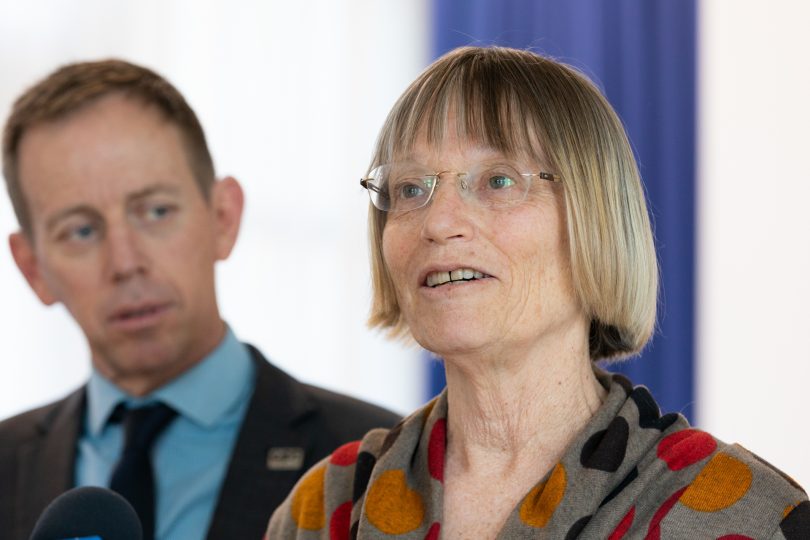
Caroline Le Couteur is disappointed that some housing initiatives have not been realised.
Ms Le Couteur was disappointed that initiatives to do with establishing a Nightingale Housing Model in Canberra, housing energy efficiency and auditing of building certifiers had not been completed, but is hopeful that they would be realised in the next term of government, if there is a similar Assembly arrangement.
She said a highlight for her had been the adoption of deliberative democracy methods to work through compulsory third-party insurance, and the Better Suburbs and Housing Choices processes. She hoped it would be an enduring legacy from this assembly.
The Parliamentary Agreement has been a big win for the Greens and a vehicle for implementing its key policies.
”If you vote for the Greens, the outcomes have flowed,” Mr Rattenbury said.
But he batted away a question about whether the Greens would consider doing a deal with the Canberra Liberals.
”We don’t presume to get that far ahead of ourselves. There is a long way to go to polling day,” he said.
But the fact is, as Mr Barr pointed out, 90 per cent of Greens preferences went to Labor and vice versa, so a Greens-Liberal agreement is unlikely.
All three agreed that while the Greens and Labor did not agree on everything, the Parliamentary Agreement had been effective.

Chief Minister Andrew Barr: “Our alliance has been effective in providing stable government at a time when our community and our city needs it more than ever.”
The Chief Minister cited a willingness to engage on policy issues, to listen to each other’s perspectives and try to find common ground.
”What’s been particularly important in 2020 has been an ability to compromise, to work together on shared problems and that our alliance has been effective in providing stable government at a time when our community and our city needs it more than ever,” Mr Barr said.
The final Parliamentary Agreement status update shows 105 items delivered or on track to be delivered, and six delayed or not progressing, mainly due to COVID-19.
They include delivering 100 per cent renewable electricity for the ACT, new nurse-led walk-in centres, mass tree plantings, more school psychologists, light rail, the Integrity Commission, banning developers from donating to political parties, more public and affordable housing, the Office for Mental Health and Wellbeing, a Drug and Alcohol Court, banning greyhound racing and trialling the use of deliberative democracy programs such as citizen’s juries.
Those unrealised included housing for people with mental illness and lived trauma, a review of the effectiveness of the Energy Efficiency Ratings Scheme, a regulatory impact statement into setting minimum EER standards for rental properties, and ensuring cultural connections are considered in planning and heritage assessments.
A bid to expand the scope of the ACT Register of Lobbyists fell short, with the Assembly resolving that the matter not be considered before the beginning of the 10th Assembly.
The Agreement item sought to include in-house government relations staff, industry associations, and project management liaison officers and companies, and conduct a review of its effectiveness after one year.
On track are initiatives such as light rail stage 2, a move to change the ACT-NSW border in West Belconnen, updating the energy efficiency of the bus fleet, providing specialist housing providers, implementing the key findings of the Waste Feasibility Study and expanding cat containment.












